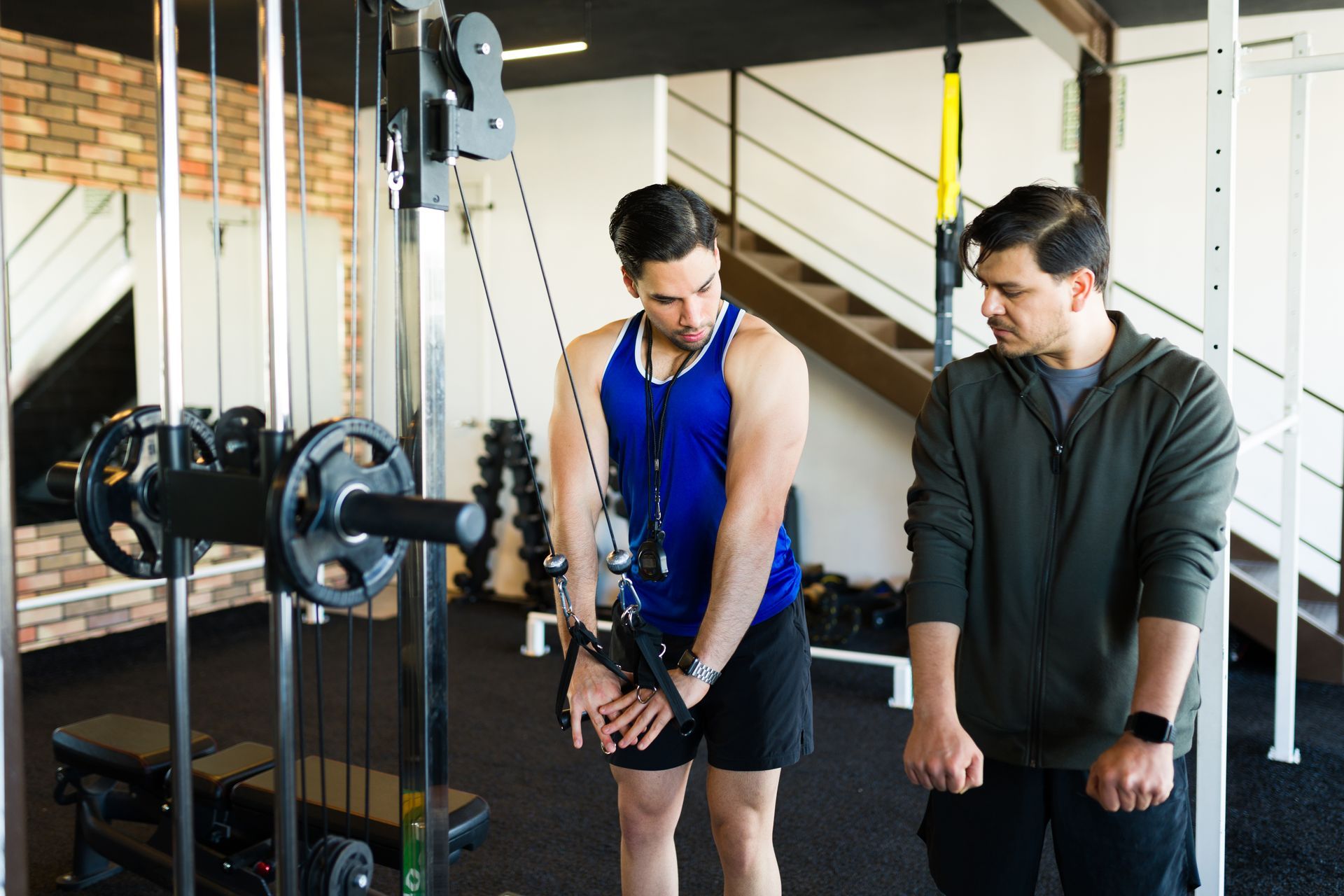August 30, 2024
Choosing the Best Workout Split: A Guide from a Nashville Personal Trainer
A Guide from a Nashville Personal Trainer
Finding the perfect workout routine can be daunting, especially with the variety of splits available. Each split offers unique advantages and caters to different fitness levels, goals, and schedules. Here, we'll explore four popular workout splits—Full Body, Upper-Lower, Bro Split, and Push-Pull-Legs (PPL)—to help you determine which one suits your needs best. As a Nashville personal trainer, I’ll guide you through making the best choice for your personal training journey.
Full Body Workout Split
The Full Body workout split involves training all major muscle groups in a single session. Typically, this routine is performed 2-3 times per week, with each workout including exercises for the upper body, lower body, and core. This approach is highly efficient because it targets multiple muscle groups in one session, making it an excellent choice for beginners and those with busy schedules.
Benefits:
- Efficiency: Working multiple muscle groups in one session maximizes workout time, making it particularly advantageous for those with busy schedules or limited time to spend in the gym.
- Recovery: Allows significant recovery time, reducing the risk of overtraining. Full Body workouts spread the training load over several days, providing ample time for muscle recovery between sessions.
- Flexibility: Missing a workout is less detrimental since each session works the entire body, making it easier to stay consistent and avoid imbalances.
Considerations:
- Intensity Management: Balancing intensity to avoid fatigue and ensure effective training. Managing the workout intensity is crucial to prevent excessive fatigue and maintain performance throughout the workout.
- Exercise Selection: Choosing compound movements that target multiple muscles to maximize efficiency. Selecting exercises like squats and bench presses enhances workout efficiency and effectiveness.
Upper-Lower Split
The Upper-Lower split divides the body into two parts: the upper body and the lower body. Typically, this split involves 4 workouts per week, alternating between upper-body and lower-body days. Each session focuses on specific muscle groups, allowing for more targeted and intense training compared to full-body workouts.
Benefits:
- Focused Training: Allows for a concentrated approach to each muscle group, ensuring thorough muscle engagement and development.
- Balanced Development: Ensures both upper and lower body receive equal attention, promoting a well-balanced physique and reducing the risk of imbalances.
- Recovery: Each muscle group gets adequate recovery time before being worked again, promoting muscle growth and reducing the risk of overtraining.
Considerations:
- Time Commitment: Requires commitment to at least four sessions per week, which may not be feasible for everyone.
- Volume Management: Balancing workout volume to prevent overtraining, especially for beginners who may not be accustomed to frequent, high-intensity sessions.
This split is suitable for intermediate lifters looking to balance their workout routine and build overall muscle.
Bro Split
The Bro Split is one of the most traditional workout routines, where each major muscle group is trained on a separate day. Typically, this involves a 5-6 day workout week, with each session dedicated to a single muscle group. This allows for high-volume training of each muscle group, which can lead to significant muscle growth.
Benefits:
- Isolation: Allows for maximum focus on one muscle group per session, leading to improved muscle definition and growth.
- Volume: High-volume training for individual muscles can lead to significant hypertrophy, beneficial for muscle growth and strength gains.
- Recovery: Each muscle group gets a full week to recover, allowing for muscle repair and growth without the risk of overtraining.
Considerations:
- Time Commitment: Requires frequent gym visits, which may not be feasible for everyone.
- Potential Imbalance: Missing a session can lead to an unbalanced routine if the missed workout isn't rescheduled.
- Upper Body Focus: This split often emphasizes upper body workouts more than lower body, potentially leading to disproportionate muscle development.
- Suboptimal Frequency for Natural Lifters: Since each muscle group is only trained once per week, this split may not provide enough stimulus for natural lifters or those with smaller muscle mass to achieve optimal growth.
Push-Pull-Legs (PPL) Split
The Push-Pull-Legs split is a versatile and balanced routine that involves three types of workouts: push (chest, shoulders, triceps), pull (back, biceps), and legs. This split can be performed either as a 3-day or 6-day routine, making it highly adaptable to different schedules.
Benefits:
- Balanced Development: Ensures all muscle groups are trained evenly, promoting balanced muscle growth.
- Versatility: PPL can be adapted for different frequencies, fitting various schedules, whether you train three or six days a week.
- Synergy: Grouping similar muscle groups together can enhance workout efficiency, as muscles often work together in compound movements.
Considerations:
- Intensity and Volume: Managing the intensity and volume to avoid overtraining, especially on a 6-day routine.
- Rest Days: Ensuring adequate rest days are incorporated, especially for beginners, to allow for proper recovery and adaptation.
Making the Right Choice
Choosing the right workout split depends on several factors, including your fitness level, goals, available time, and personal preferences. Here are a few tips to help you decide:
- Assess Your Goals: A Full Body workout might be ideal if your goal is overall fitness and you're short on time. For muscle hypertrophy, consider the Bro Split or PPL.
- Evaluate Your Schedule: If you can only commit to a few days a week, a Full Body or Upper-Lower split may be best. For more frequent training, PPL or Bro Split might be more suitable.
- Consider Your Experience: Beginners may benefit from the simplicity and recovery time of Full Body workouts, while more experienced lifters might find better results with PPL or Bro Split routines.
- Listen to Your Body: Ensure that any chosen split allows for adequate recovery and doesn’t lead to overtraining or injury.
Conclusion
There is no one-size-fits-all approach to workout splits. Understanding the unique benefits and considerations of each can help you tailor a program that aligns with your fitness journey and lifestyle. Remember, the best workout split is one that you can consistently follow and that brings you closer to your fitness goals. For personalized guidance and to explore more fitness strategies, consider working with a Nashville personal trainer. Whether you’re looking for personal training in Nashville or need advice on your fitness journey, expert support can make all the difference in achieving your goals.





